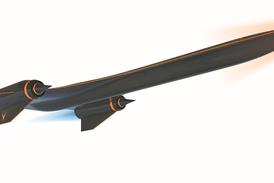Europe's airlines have given a mixed but generally cool reaction to the European Commission's (EC) guidelines on state aid and airports.
The strongest opposition has come from the European Low Fares Airlines Association (ELFAA), which is no surprise given that the new rules were drawn up in response to an EC ruling in February 2004 against a support package agreed between ELFAA member Ryanair and Belgium's Charelroi Airport.
The EC published its guidelines in February, with the main points including a stipulation that aid should only be targeted at airports with fewer than 5 million passengers per year, and limited to 30-50% of costs for a period of up to five years. Aid would also be limited to routes where there was no equivalent high-speed rail service.
ELFAA argues that the guidelines as they stand do not take proper account of the market economy investor principle (MEIP), which tests whether a publicly-funded company has acted in the same way as a private concern would have done in similar circumstances.
ELFAA believes that Brussels "wrongly assumes that any incentives granted by public airports are state aid and must therefore comply with the state aid guidelines".
Jan Skeels, secretary general of ELFAA, says: "The low-cost airport model has been so successful that a growing number of these airports are being privatised – clear proof that the incentives being offered by them make economic sense." ELFAA also says that where airport aid does exceed the guidelines, the rules should only cover that proportion of support that is in excess of that allowed under MEIP.
ELFAA argues that because the memorandum says that member states must "confirm that they accept these proposals" it suggests that the guidelines will in fact be regulations. "DG Transport is essentially forcing the member states to accept para-legislation and is thereby usurping the powers both of the European Parliament and the Council."
The European Regions Airlines Association (ERA) also criticises the proposed guidelines: "As they are written, the guidelines are complex, difficult to interpret, cover areas outside the scope of the subject area (with no legal basis) and are in certain areas contradictory." ERA joins ELFAA in voicing its disapproval of the decision to favour high-speed rail alternatives. In addition, the regional airline trade body argues that the EC is wrong to use passenger volumes as criteria for assessing state aid.
Airport trade body ACI Europe gives a warmer reception to the proposals, but calls for "clarity and flexibility on specific issues". The lobby group feels that the 50% limit on support is arbitrary and too restrictive, and argues that as long as an airport is self-financing, regardless of size and ownership, any initiative for infrastructure development and traffic improvement should be allowed. "The principle of the prudent private investor should be flexible enough to allow for the long-term nature of airport investments," it says.
COLIN BAKER LONDON
Source: Airline Business























